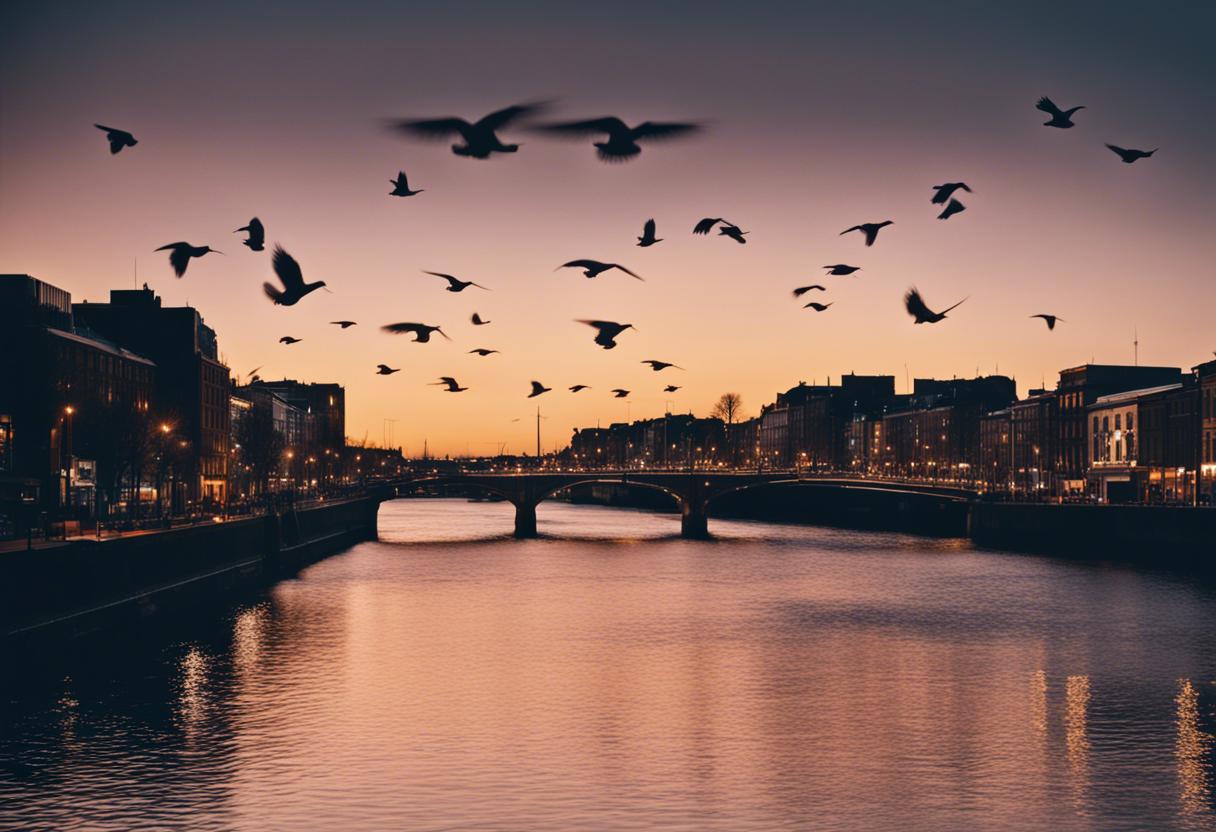Whilst photographing my local river, I had the good fortune to capture an image of a cormorant wrestling with an eel, an unusual occurrence indeed. Edward Barr, Dublin
Indeed, it’s a rare sight as eels have seen a drastic dip in population in recent years, and cormorants typically reside near coastlines. However, they do venture into freshwater rivers in search of sustenance and their long, hook-tipped bills are ideally suited for capturing slippery prey like eels. When certain that it has beaten the eel into submission, the cormorant gulps it down headfirst, sometimes taking a few attempts for such a sizeable meal. Eels inhabit and develop in freshwater, but are born in the Sargasso Sea and traverse the Atlantic, entering our rivers as tiny elvers. When fully matured they make a journey back to the Sargasso actively for mating, spawning and eventual demise. Rising ocean temperatures are lowering their numbers in both traversals.
I originally thought dead leaves were littering my blueberry bush. Could you identify the moth species? Geraldine O’Daly, Co Galway
This is a splendid snapshot of the poplar hawkmoth, known to rest with its hind wings extended in front of the forewings, convincingly mimicking a pile of dead leaves and confounding predators. If a bird pecks for closer inspection, the moth displays two bright spots at the base of its hind wings to startle and deter it. It’s quite a common sight during this time of year.
I came across this creature basking on a young cherry tree back in May. I’ve had little success with identification through online photos. Alan Hancock, Co Mayo
You have sighted a female hairy dragonfly or Brachytron pratense. Known in Irish as “seabhcaí an earraigh,” indicating a spring dragonfly, it is, in fact, the first hawker dragonfly to appear, exclusively pre-mid-June. Sightings have been reported all across Ireland, yet it tends to steer clear of highly acidic locations, favouring fens and lowland lakes instead.
I discovered these spiderlings in my garden this morning. I’m keen to ascertain if they are garden orb web spiderlings? Kevin Culhane, Co Kildare.
This is precisely their nature. They represent the offspring of Araneus diadematus, otherwise known as the garden or cross spider. These baby spiders, or spiderlings, as they break free from their egg casings, are morphologically akin to their fully-grown counterparts. Their growth process involves shedding their outer skin once their bodies and limbs have expanded internally. Following the detachment of the old exoskeleton, the spider undergoes an inflation process (presumably accompanied by a sense of relief) and then the new, tender exoskeleton hardens. If the spider is unable to extract all of its legs from the former shell prior to the hardening of the new one, there’s a risk of losing that particular limb. This progression stages itself around five to six times as the spiderling approaches adulthood.
Regarding the copulating flies on the redcurrant leaf in your garden, Mervyn Taylor, they are sunflies (Helophilus pendulus) – a type of hoverfly, widespread in Ireland. Their activities are sunlight dependent, hence their title, and are operative mainly between April and October. Following the mating process, the female positions her eggs in bodies of water. The eggs then eventually birth into larvae with distinctive rear ends that extend endoscopically. These larvae are equipped to breathe oxygen from the air above the water through these airway-like structures at their rear, enabling them to exist in even the most still, oxygen deprived water bodies. Their diet mainly comprises organic waste, inclusive of sewage. In instances of heavily contaminated water, they’re typically the sole survivors among invertebrates.

